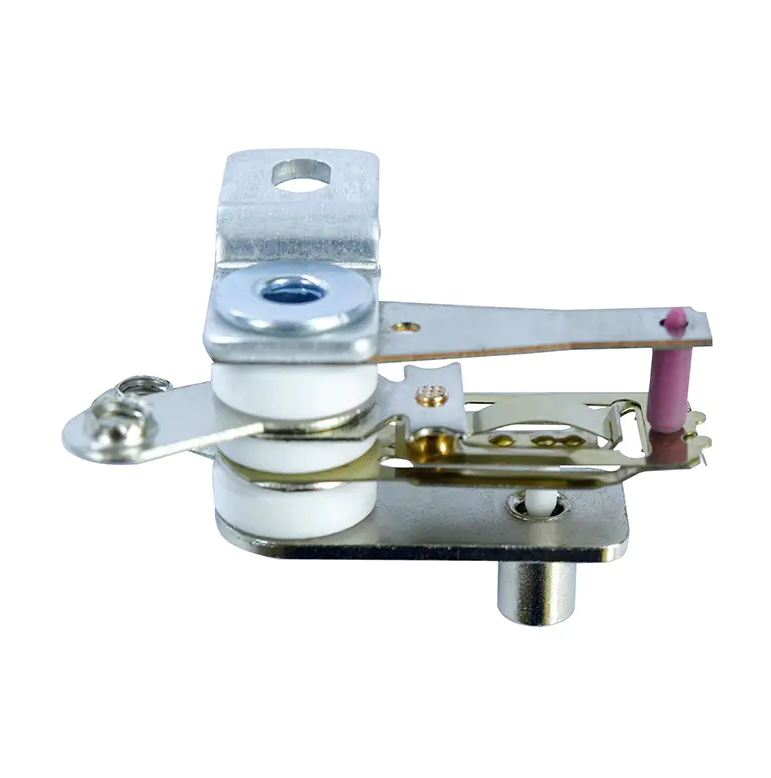Bimetal Iron Thermostat Performance in Humid and Corrosive Conditions

Introduction to Environmental Challenges
Bimetal Iron Thermostats are widely used in appliances and industrial equipment to regulate temperature through precise thermal response. However, environmental factors such as high humidity and corrosive conditions can significantly affect their performance and longevity. Understanding how these devices behave under such conditions is critical for ensuring reliable operation and minimizing maintenance issues. Manufacturers design these thermostats to balance sensitivity, durability, and resistance to environmental stressors.
Material Considerations and Corrosion Resistance
The primary concern in humid or corrosive environments is the potential degradation of metal components. The bimetallic strip, usually composed of two metals with different thermal expansion rates, must maintain mechanical integrity to accurately respond to temperature changes. High moisture or exposure to corrosive chemicals can accelerate oxidation or pitting of iron and other metals. High-quality Bimetal Iron Thermostat designs incorporate corrosion-resistant coatings, protective housings, or stainless steel alloys to mitigate these risks and ensure stable performance over time.
Impact of Humidity on Thermal Response
Excessive moisture can affect the thermal response of the bimetal strip by introducing minor surface corrosion or by allowing water to interfere with mechanical movements. Even small amounts of oxidation can alter the expansion rates of the metals, slightly shifting the activation temperature. Properly sealed housings and environmental protection measures prevent moisture from reaching critical components, ensuring that the thermostat continues to operate with precise and consistent temperature control.
Protective Housing and Sealing Design
Manufacturers often use protective housings and sealing mechanisms to shield the internal bimetal components from environmental exposure. This includes airtight enclosures, epoxy coatings, and gaskets that prevent water or corrosive substances from entering the device. These design elements are crucial for maintaining performance in humid or chemically aggressive environments. Bimetal Iron Thermostat units with enhanced protective features can be reliably used in kitchens, bathrooms, industrial plants, and outdoor installations without frequent maintenance.
Longevity and Maintenance Considerations
Exposure to moisture and corrosion can gradually reduce the lifespan of the thermostat if protection measures are inadequate. Periodic inspection and cleaning of external surfaces, as well as ensuring that protective coatings remain intact, can significantly prolong operational life. Thermostats designed for corrosive environments often include replaceable or reinforced bimetal elements, reducing the need for complete replacement and minimizing downtime in critical systems.
Performance in Real-World Applications
In practical scenarios, a well-protected Bimetal Iron Thermostat maintains reliable thermal control even under challenging conditions. Its ability to withstand high humidity and resist corrosion ensures that appliances and machinery continue to operate safely and efficiently. By carefully selecting materials and incorporating robust sealing techniques, manufacturers provide thermostats that balance sensitivity with durability, meeting the demands of both residential and industrial applications.
Conclusion
The performance of a Bimetal Iron Thermostat in high humidity or corrosive environments depends on material selection, protective design, and maintenance practices. Properly engineered units can resist oxidation, maintain accurate thermal response, and provide long-term reliability. By focusing on corrosion resistance and environmental protection, manufacturers ensure that these thermostats remain dependable, delivering precise temperature control even in challenging conditions.
Rated Voltage: 125V/250V
Rated Current: 10A/16A
Life Cycle: 100000
Temperature: 0~180℃
Contact Type: NO/NC
Action Type A: automatic reset
Installation: Without mounting ring
Terminal: 4.8/6.3
Terminal Angle: Plane angle of 0°
Bend angle of 45°
Bend angle of 30°
- Art
- Causes
- Crafts
- Dance
- Drinks
- Film
- Fitness
- Food
- Juegos
- Gardening
- Health
- Inicio
- Literature
- Music
- Networking
- Otro
- Party
- Religion
- Shopping
- Sports
- Theater
- Wellness


